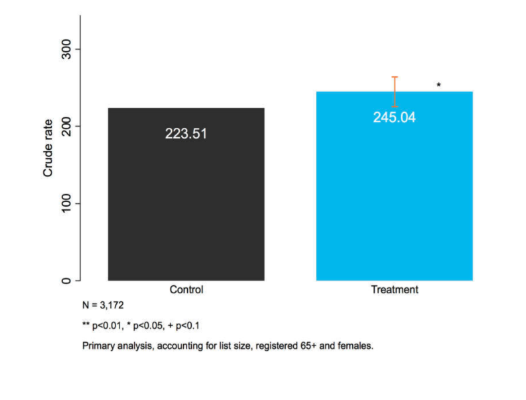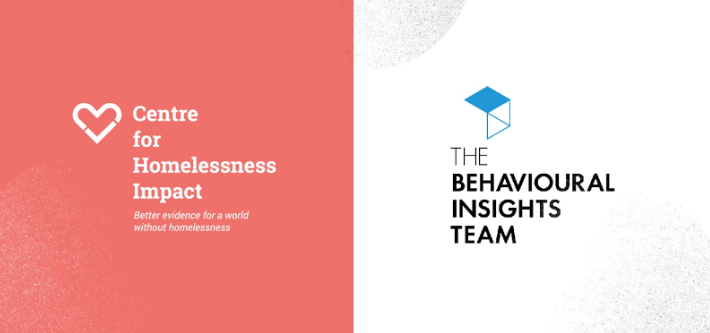In the second post of our ‘catching cancer early’ blog series we set out the findings from a trial in the Greater Manchester Area that assessed the impact of social norm feedback on urgent cancer referral rates.
Cancer in the UK
Almost half of the UK population will get cancer during their lifetime. Early diagnosis and treatment are critical for improving cancer survival rates, yet one in five cases of cancer is still detected late through emergency hospital admissions. Two key routes for early diagnosis are urgent GP referral and national cancer screening programmes.
In Greater Manchester (GM) cancer rates are higher than the national average, yet cancer screening rates and the urgent referral rate is lower than the England average. Greater Manchester Health and Social Care Partnership asked BIT to look at this issue. Between March 2015 and August 2018, BIT ran a series of trials to test approaches to improve early cancer detection: 2 large-scale field trials focusing on urgent GP referral and breast cancer screening respectively and 2 online trials using our digital research platform Predictiv which focused on cervical and bowel cancer screening. This blog, is the first of a series that will cover our work on urgent GP referrals.
We would like to thank the Health and Social Care Partnership, without which this work would not be possible. Thanks to the ambition of GMHSCP, BIT got a unique opportunity to rigorously test a full range of interesting behavioural approaches to improving screening uptake and influencing GP behaviour. We learnt a lot about how England’s screening programmes work, how different groups feel about screening – and crucially, what works and what does not.
Urgent GP referral
The urgent cancer referral process is the first major route for early cancer diagnosis in England. GPs can refer patients with suspected cancer to be seen by a specialist within two weeks. Referral rates vary substantially across England and the process is underused in certain areas (including the Greater Manchester area), even when accounting for demographic factors.
Why might urgent cancer referral be under-used?
Although cancer is common, GPs will only see a handful of patients a month who should be referred. This means GPs can find it hard to learn over time because of the small number of cancer cases they see compared with coughs and colds for example.
There is also a lack of feedback about their referrals and whether they were appropriate. We think the uncertainty about the appropriateness of their decisions, combined with pressures on secondary care, could be one reason why some GP practices make fewer urgent referrals.
Our intervention: social norm feedback
We wanted to test the impact of social norm feedback on urgent referral rates. Much like the approach we took in a previous trial on antibiotics prescriptions, we thought that telling GPs how their referral decisions compared to local colleagues could help guide their referral behaviour.
In 2017-2018, we ran a large scale randomised stepped-wedge trial with 244 GP practices in GM with an urgent GP referral rate below the England average. We sent three letters to each practice, one copy to a named GP and another to the practice manager:
- a first letter announcing that the feedback would be sent;
- a feedback letter;
- a reminder letter.
To make the feedback stronger, we personalised it by splitting our practices in two groups: low referrers (the bottom 30% of of GM practices) and medium referrers (GM practices in the 20% of referrers closer to the England average).
Our findings
The letters had a statistically significant positive effect on the urgent GP referral rate. The GP practices that received the social norm feedback letters increased their urgent crude GP referral rate by 9.6% (p < 0.05 level), compared to the control group. This means that each of the treated GP practices referred on average 15.5 patients per month, compared to 14 patients referred in the control group.
 The increase was driven by a sizeable improvement in performance of the lowest referrers . After receiving the feedback, these under-performing practices urgently referred 20% more patients (p <0.01 level). This means that our tailored targeting was effective and helped low referrers to reduce their gap to the England average.
The increase was driven by a sizeable improvement in performance of the lowest referrers . After receiving the feedback, these under-performing practices urgently referred 20% more patients (p <0.01 level). This means that our tailored targeting was effective and helped low referrers to reduce their gap to the England average.
Impact
During the trial, our 244 GP practices urgently referred 1,281 additional patients, of whom 90 may be expected to have been diagnosed with cancer.
If all the 244 practices had been sent the feedback letters at the same time they would have referred 2,196 more patients during the 6 months of the trial. We estimate that this would lead to around 154 additional cancer patients being diagnosed early, improving their chances of survival and saving the NHS £1.2m thanks to the lower costs of early treatment.
If scaled up in England, our intervention could help to diagnose around 2,500 more cancer patients earlier and generate savings of up to £20m within 6 months.





